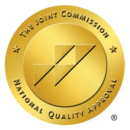A substance abuse evaluation helps to measure the level of addiction in an individual. It also assists professionals in creating an effective treatment plan that can meet the specific needs of each person. This helps to ensure that these individuals have the best chance at a successful recovery.
Battling a substance abuse problem or addiction can have severe, even fatal, consequences. It can cause damage to the mind, body, mind, and relationships. When an addict suffers from uncontrollable substance use, they often get into dangerous situations and put their health at risk. When someone reaches this point and needs help, they will usually go through a substance abuse evaluation. This may be either by choice or court-ordered.
Once a person is convicted of driving under the influence of alcohol or drugs (DUI), they will most likely be court-ordered by their state to complete a substance abuse evaluation. Some states require this evaluation as a prerequisite to participating in programs, such as diversion or deferred sentencing, that allow the offender to avoid a DUI conviction.
Usually, a certified state agency administers substance abuse evaluations. The overall purpose, process, and types of assessments and treatments tend to be uniform. But each state has its own requirements.
Here are some other examples of circumstances or convictions in which a court-ordered substance abuse evaluation may be required:
- Minor in Possession (MIP)
- Arrested for possession of drugs or alcohol
- Disorderly conduct
- Public intoxication
- Using a false ID
Purpose
The substance abuse evaluation identifies the possible presence and the extent of the offender’s drug or alcohol problem. It also allows for the development of a drug addiction treatment plan that addresses the individual’s specific problem and circumstances.
Some essential points of the purpose of a substance abuse evaluation are:
- To determine if the individual has a drug or alcohol addiction
- To assess the level of severity of the substance use or addiction
- Discover if there are any co-occurring conditions, including physical or mental health concerns, or other drug use
- To measure the extent to which the individual’s substance use affects their life
- To provide an overview of the person and their particular circumstances so that the treatment can best suit their needs for recovery
After a person is arrested for a DUI, the court might require the individual to go through a substance abuse evaluation during the criminal proceedings. Criminal proceedings will differ by state. Some require the completion of a theft evaluation before sentencing. In these cases, the substance abuse evaluation will impact how a judge sentences an offender. It can often result in a reduction, elimination, or increase of penalties that would otherwise be imposed. On the other hand, other states require the evaluation to take place within a specified period post-sentencing as a condition of probation, or part of a diversion, deferred sentencing, or similar program.
Call Discovery today to schedule a free evaluation
Our compassionate counselors are standing by to answer any questions you may have. During the confidential evaluation, Discovery’s clinicians will determine the appropriate level of care for you.
Process
Generally speaking, the process of substance abuse evaluations includes two separate sections. The Substance Abuse and Mental Health Services Administration (SAMHSA) states that the parts of this process are screening and assessment.
A court-ordered substance abuse evaluation will generally consist of a detailed interview with a treatment provider. The provider will then review the offender’s history, regarding the substance, criminal history, driving record, and arrest report. The offender may also need to provide a drug and alcohol urinalysis screening.
Screening
A screening tool is not the same as an assessment. Screening for substance use is one of several tools that can help to identify if further evaluation is necessary. Only a qualified professional should analyze the results of all screenings and assessments.
Before intake, treatment providers will perform a detailed screening to determine the presence, scope, and severity of a person’s substance abuse issues. Several trained professionals administer the screenings. (This may include social workers, counselors, psychiatrists, and other mental health professionals.) The screening process will often consist of direct, yes-or-no questions. In some cases, patients will start this process online. The purpose of the screening process is to look for:
- The specific type of substance
- The existence or threat of substance use disorder (SUD)
- If preliminary interventions would be helpful to prevent the onset of addiction
- The length of time the prospective patient has used drugs or alcohol
Screening Methods
Some commonly used resources in the substance abuse screening process include the Alcohol Use Inventory (AUI), Substance Abuse Subtle Screening (SASSI), CAGE questionnaire, Brief Screener for Alcohol, Tobacco, and other Drugs (BSTAD), and Tobacco, Alcohol, and other Drugs (TAPS).
AUI – This is a screening tool intended for supposed alcohol abuse only. The questions take feelings, attitudes, behaviors, and lifestyle into consideration. Despite the questioning in this method, AUI’s potentially fatal flaw is the need for transparency.
SASSI – This is a self-reporting tool that is easy to take, administer, and score. This type of screening looks deeper into the psychological side of substance use. It assesses the responses as well as how the answers are given. It screens for openness, defensiveness, and aggressiveness. This helps to determine if an individual has a substance abuse problem. It has scientific evidence to show that it has 93 percent accuracy when diagnosing substance dependence.
CAGE – This tests for alcohol misuse using four simple questions. It is brief and non-invasive. For accuracy, it is vital for the person answering the questions to be truthful.
BSTAD – This screening method is for teens and adolescents. It is a self-assessment that individuals can take online with or without a clinician present. A professional should interpret the results from this assessment.
TAPS – This a versatile screening tool that provides a more in-depth screen. It can be taken online or done face-to-face. It explores recent and past substance abuse habits. A professional reviews the results.
Assessment
The assessment part of the substance abuse evaluation process is more detailed and is mainly based on the screening results. Individuals will answer questions to identify the exact nature of their substance use what specific factors caused its development and continuation of usage.
The assessment is complete once a substance use disorder has been identified, and any other co-occurring associated mental health conditions, lifestyle factors, and medical issues. An experienced professional should conduct the assessment. This is because professionals have the skill to be more in-depth and can make direct, informed decisions about treatment.
Some of the common resources used in modern substance abuse evaluations include the Diagnostic Interview Schedule-IV (DIS-IV) and the Addiction Severity Index (ASI). In some circumstances, substance abuse assessments can use input from family or loved ones for accurate results.
DIS-IV – This type of interview administers a structured set of questions developed by knowledge acquired from the Diagnostic and Statistical Manual of Mental Disorders.
ASI – This is a semi-structured interview that showcases recent and lifetime use habits. Itis extensive and used as a standardized tool to test individuals entering rehabilitation. During this interview process, the administrator will consider medical history, substance use, any time in custody. The administrator will also consider the person’s employment status, their relationship and familial statuses, and mental health.
Recommendation for Treatment
Depending on the interview, supporting documentation, and screening results, after a patient has completed their court-ordered evaluation, the treatment provider will usually recommend a customized care plan. The plan they recommend will address the individual’s specific needs. This includes things such as whether a patient will benefit from inpatient rehab or outpatient care. They can also determine if they need or are eligible to receive medication-assisted treatment (MAT), and more.
A range of people trained in addiction may process the components of this procedure. A social worker, counselor, therapist, psychologist, psychiatrist, doctor or nurse, will evaluate the tests and interviews. The medical professional will ask questions about the person’s health history, any past and present drug and/or alcohol use, the manner and behaviors in which substance use affected their life, and any history of past treatments for these concerns. A physical may be necessary if a physician administers the evaluation.
Typically, the individual has to pay for the costs of the evaluation and the treatment program. The evaluation fees will vary by each state, but the price is usually around $100 to $150. Individuals make this payment directly to the agency that did the evaluation.
You should not be afraid to find out if you or someone close to you needs help with a drug or alcohol addiction. If a substance abuse disorder has affected your life, consider taking a substance abuse evaluation as soon as possible. This action can determine the right treatment for you. Identifying substance use disorder is a crucial first step in overcoming the disorder and having success in long-term recovery.
If you’re ready to begin your journey to recovery from substance abuse, please contact us here at Discovery Institute. We will work to help you leave addiction in your past and move forward in your life.
Provide the highest quality clinical care through evidence-based treatment practices and innovative supportive strategies to improve and heal the lives of individuals suffering from substance use disorder. It’s our goal to lessen the adverse impact on families and society as a whole through providing a range of cutting-edge treatment modalities and individualized treatment plans for all of our clients and their families.



